
Is the tide finally changing in Orlando? What chance does Universal have to finally take on Walt Disney World? Without a single hesitation, Walt Disney World is recognized as the leader of the theme park industry. How could it be anything but? Walt Disney World is a sort of perfect storm, constructed as the “Vacation Kingdom of the World” and maintaining that credo today.
When an athlete wins the Superbowl, and where does he exclaim he’s headed? Walt Disney World. Families deposit every spare coin at the end of the day into a jar labeled what? Walt Disney World. It's engrained in our society and into pop culture as the place that all "normal" American families make it to sooner or later.
That’s how it was designed.
Walt Disney opened the original Disneyland in 1955 in Anaheim, California. It consisted of an incredibly small theme park and its equally sized parking lot – a rectangular plot of north-to-south land surrounded by family-owned orange groves. Within a few years, those quiet, fragrant orange trees had been replaced by neon signs, hotels and motels – the bustling of a city that had sprung up around the unlikely success of Disneyland.
Dissatisfied by the neighborhoods that had popped up around his gem, Walt Disney took what he’d learned and earned in California and purchased massive land holdings in swampy Central Florida. Amassing as much land as San Francisco (or twice the size of Manhattan), Walt Disney World today is a behemoth, and in terms of scale, it may be realistic to imagine that no other theme park resort could evolve to be as large, even if it wanted to.
The Origins
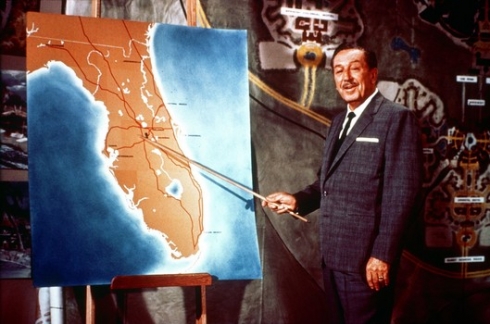 Image via examiner.com. Click for link.
Image via examiner.com. Click for link.
Magic Kingdom opened in 1971, modeled after Disneyland Park. Instead of accessing the turnstiles by walking a few steps from the parking lot, though, visitors to the Magic Kingdom parked in one area of the massive resort, and approached the towering white spires of Cinderella Castle (very deliberately) via a classic white ferryboat or the hyper-futuristic monorail, each passing massive resort hotels scattered along the lake’s shore.
Just over a decade later, Walt Disney World opened its second theme park – Epcot. A sort of retro-modern World’s Fair, Epcot’s massive pavilions were a departure from Magic Kingdom’s fantasy lands, but the park was instantly recognizable and admired by the generation who first encountered it. At the end of the 1980s, Walt Disney World had grown to a wildly successful resort, and tourists were, indeed, coming.
Eager to make its mark in the growing region, Universal Studios intended to import a version of its world famous Studio Tour that had been a staple of its property, Universal Studios Hollywood, since the park’s earliest days.
Fresh from a stint as the head of Paramount Pictures, CEO Michael Eisner joined the Walt Disney Company with a passion for films, and announced that Walt Disney World’s third park would be collaboration between two movie giants. The park would be called The Disney-MGM Studios.
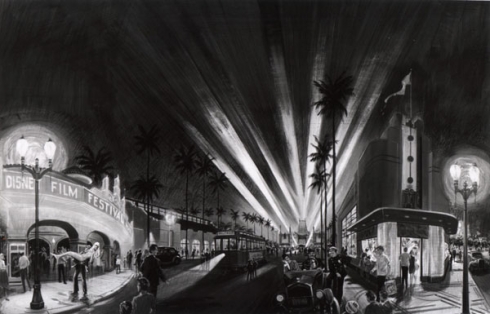 Disney's ambitious plans for Disney-MGM Studios weren't the only studio-based plans for Orlando. © Disney.
Disney's ambitious plans for Disney-MGM Studios weren't the only studio-based plans for Orlando. © Disney.
Universal reeled. Certain Eisner had known of their plans for an Orlando studio park as head of Paramount, they quietly began a race to finish their studio park first. What’s worse, they learned that Eisner intended for a tram tour through façade streets and production facilities to be the main attraction of Disney’s new park. Universal quickly separated the elements that had been contained on their studio tour (an encounter with King Kong, the experience of an earthquake in the New York subway station, a run-in with a very hungry Jaws, and production facility tours) into individual attractions.
Still, Disney-MGM Studios opened in May 1989, a full year before Universal Studios Florida opened just a few miles north.
The Rest Is History
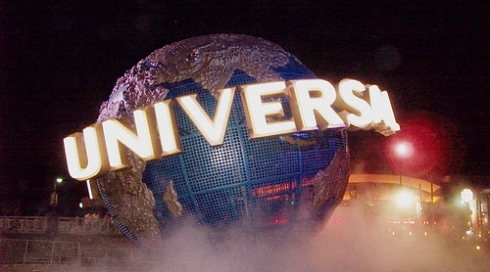 Via Flickriver. Click for link.
Via Flickriver. Click for link.
Of course, Walt Disney World prospered, expanding and growing and evolving into the powerhouse it is today, with four massive theme parks, each larger than the one before (culminating in Disney’s Animal Kingdom opening in 1998), two world-class waterparks, dozens of resort hotels ranging from budget to elegant, golf courses, and a “downtown” style shopping district.
In 2001, the original Disneyland Park became one part of the re-branded Disneyland Resort, joined by a second park, Disney’s California Adventure. The new park was built on what had been Disneyland’s parking lot – the entrances to the two face each other across a fifty-meter wide plaza.
Meanwhile, at the massive Walt Disney World, literal highways connect the resort’s huge facilities and four massive parks.
And just down the street, Universal sat. Successful in its own right, Universal drew adults more than families. Its rides were, for the most part, based on classic Universal films. Each was (compared to Walt Disney World’s offerings) loud, scary, and dramatic. There was fire, sharks, giant apes, earthquakes, and dizzying motion simulators. In a recurring joke, it seemed that “something goes wrong” on every attraction at Universal Studios Florida. It was intense, and it was clear that Universal’s niche kept it separate from Walt Disney World. Even where Universal added family rides, it remained a park geared primarily toward adults and teenagers.
Shifting Trends
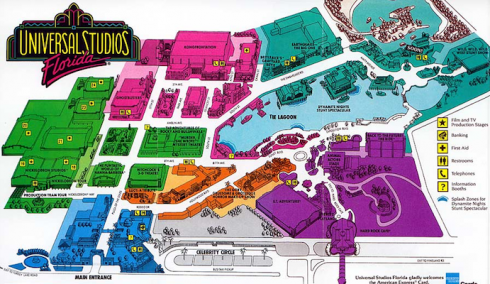 A symptom of the era's studio parks, this 1995 map shows Universal's reliance on boxy, visible show buildings.
A symptom of the era's studio parks, this 1995 map shows Universal's reliance on boxy, visible show buildings.
And by the mid 1990s, both Universal and the Disney-MGM Studios felt the weight of their “studios” style theme. Public perception was shifting. Both parks highlighted the “magic” of movie making. Attractions were placed in visible, boxy show-buildings. The streets were lined by facades meant to resemble famous cityscapes, but immediately recognizable as two-dimensional cutouts.
In 1994, Magic Kingdom’s Tomorrowland was completely rebuilt as an immersive environment that appeared real from all angles; at the original Disneyland, the Indiana Jones Adventure opened, redefining the dark ride and presenting a tangible, edge-to-edge themed attraction. Even with its financial pitfalls, Disneyland Paris opened with still more ultra-immersive styling and realism.
The opening of Animal Kingdom in 1998 was a recognizable final step, representing the new direction theme parks were headed in – fully themed, immersive, green, and hyper-detailed. The twenty-first century, it was certain, would be marked by huge theme parks chocked full of detail, storytelling, and cohesion – the people would pay to enter fully-designed environments, lost in a different time and place, separated from the realities of the world they knew and – even if temporarily – transported somewhere else.
Suddenly, both Disney-MGM Studios and Universal Studios Florida were looking distinctly last-century. They would need to change.
The Adventure Begins
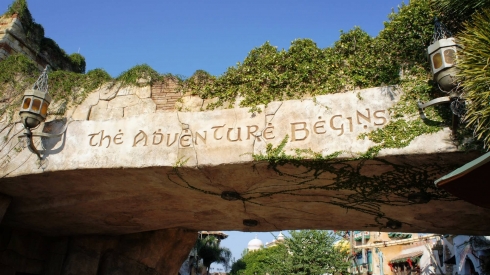 Something big was on the horizon for Universal...
Something big was on the horizon for Universal...
Universal saw its chance. Disney had stolen their thunder just a decade before, and entering the new millennium, Universal saw its opportunity to turn the tables. Even then, they couldn’t have known how different the theme park landscape would look a decade later thanks to Universal’s innovation. And now, the very real question emerges: Is Walt Disney World falling behind Universal?
In most all ways, absolutely not. But it's a question that both Universal and Disney fans are pondering. But why?
How could miniscule, outdated Universal Studios Florida ever compete with the world’s largest theme park resort? Continue on to Part Two as we explore Universal's unprecedented rise in Orlando and the industry! It's about to become a whole different universe...

Comments
I love both Disney and universal I always visit both when I visit Florida, both parks are perfect in their own unique way♥★♥
I love the competition, as it makes it better for all if us. I always visit both park resorts (Disney & Universal) every time I am in Orlando. I cherish the old rides and get angry when they go away (Jaws, Snow White) but the new rides are often innovative and always exciting!